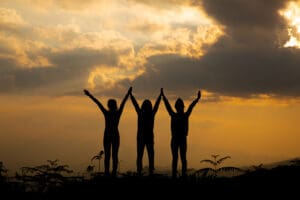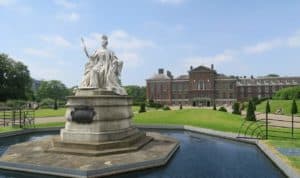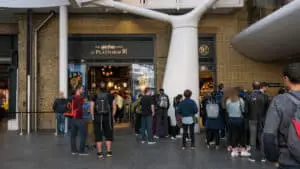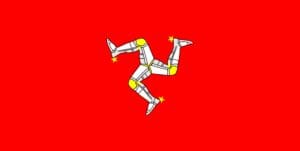Unveiling Lombok: Indonesia’s Best-Kept Secret Paradise
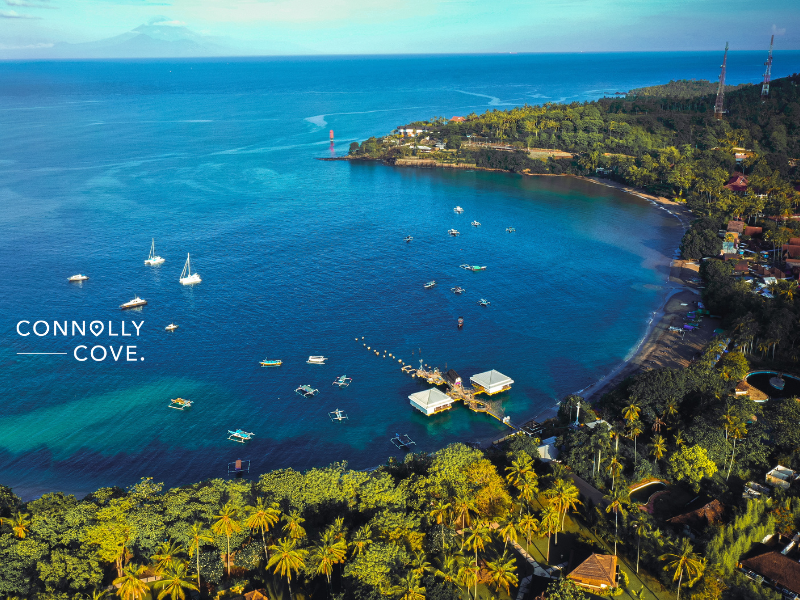
Updated On: December 05, 2023 by Noha Basiouny
Amidst the azure waters of the Indonesian archipelago lies a gem called Lombok, waiting to be explored. Although often overshadowed by its famous neighbour, Bali, this relatively untouched paradise beckons, with its pristine beaches, vibrant culture, and breathtaking landscapes, travellers into a world where time seems to slow down, allowing for a deep immersion into the island’s rich heritage and natural wonders.
From the majestic peaks of Mount Rinjani to the unspoiled sands of Selong Belanak, every corner of Lombok tells a unique story. In this article, we will go on a journey to unravel the allure of Lombok, delving into its hidden treasures and uncovering the unique mixture of tradition and modernity that defines this captivating destination.
Let’s hop into it.
Lombok
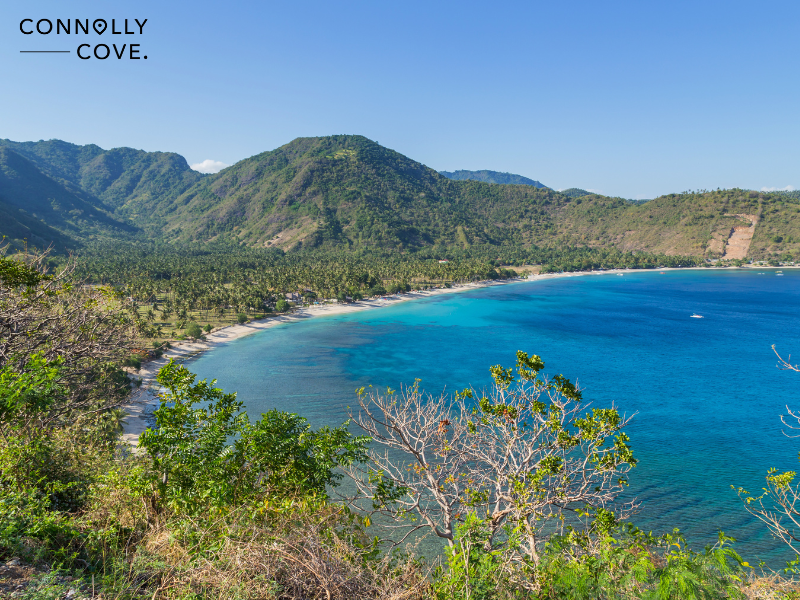
Lombok is one of Indonesia’s several thousand islands, yet it is not just like any of Indonesia’s several islands.
The island of Lombok is part of the Lesser Sunda Island chain, which comprises around 975 other ones, the most important of which include Bali, Timor, and Flores. It is separated from Bali to the west by the Lombok Strait—maximum width is 40 kilometres—and is a little smaller, with an area of 4,739 square kilometres. Lombok is surrounded by other smaller islands known as Gili.
As Indonesia generally uses a system of administrative divisions that include provinces, regencies, and cities, Lombok happens to be part of the West Nusa Tenggara province. Within this province, there are several regencies. Some of the regencies on Lombok include West Lombok, East Lombok, North Lombok, Central Lombok, and Mataram.
Mataram is the capital city of the West Nusa Tenggara province and serves as the administrative and economic centre of the region. While it is commonly referred to as a city, it is technically both a city and a regency combined.
Out of the 277.5 million people who live in Indonesia, around 3.8 million of them settle in Lombok as of 2020. The Sasak people, the majority of whom are Muslims, are the predominant ethnic group on the island and make up the majority of the population. They are also known for their thatched-roof houses, traditional ceremonies, and handwoven textiles.
In addition to the Sasak, there are also other ethnic groups living on Lombok, such as the Balinese, Javanese, and indigenous communities on the smaller islands surrounding Lombok. The cultural diversity adds richness to the island’s heritage, and visitors to Lombok often have the opportunity to experience various aspects of these cultures through traditional performances, ceremonies, and interactions with local communities.
Like many regions in Indonesia, Lombok’s economy is diverse and is influenced by various sectors, mainly including tourism, which has recently been on the rise, and agriculture, as the island is known for its cultivation of rice, tobacco, soybeans, and various fruits as well as fisheries, of course. Handicrafts, mining and construction also contribute significantly to the local economy.
Weather
Thanks to being located not that far from the equator, Lombok is a tropical region where the climate is characterised by warm temperatures throughout the year and two unequal seasons, dry and wet.
The dry season, falling between May and September, features lower humidity and minimal rainfall. Daytime temperatures range from around 27° to 32°. During this season, too, Lombok experiences the southeast monsoon—this is a climatic phenomenon where the wind changes direction, causing precipitation to change as well.
The northwest monsoon brings the wet season, which stretches for seven months from October to April. It is characterised by way higher humidity and increased rainfall. The heaviest rainfall is usually experienced from December to March. Temperatures during these months average 26° to 30°.
That being said, weather conditions can vary across different parts of the island, especially considering the diverse landscapes ranging from beaches to mountainous areas. Additionally, Lombok is subject to occasional tropical storms and cyclones, particularly during the wet season. That is why it is advisable to check current weather forecasts and travel advisories before planning a trip to Lombok.
Nature
The nature of Lombok is characterised by its diverse landscapes, offering a balance between adventure and relaxation. It mainly features white sands, turquoise waters and spotless beaches, the most popular of which include Kuta Beach, Tanjung Aan, and Selong Belanak, each offering a unique coastal experience.
Situated off the northwest coast of Lombok are the Gili Islands—Gili Trawangan, Gili Meno, and Gili Air, as we mentioned earlier. These islands boast vibrant coral reefs teeming with marine life. Snorkelling and diving enthusiasts can explore these underwater ecosystems, discovering a diverse array of fish and coral species. The absence of motorised vehicles on the Gili Islands contributes to a tranquil and eco-friendly atmosphere.
Besides, Lombok is home to several picturesque waterfalls, such as Tiu Kelep and Sendang Gile. These natural wonders are surrounded by lush greenery and offer refreshing swimming opportunities. In the foothills and valleys of the island, visitors can also find traditional rice terraces, adding to the visual charm of the island and showcasing its agricultural heritage.
That being said, the most prominent feature of Lombok could by far be Mount Rinjani. This is an active volcano and the second-highest peak in Indonesia at a height of 3,726 metres above sea level. It is part of the Pacific Ring of Fire, an area known for its frequent volcanic and seismic activity. Speaking of Mount Rinjani in particular, its last significant eruption occurred in 2016.
The summit of Mount Rinjani offers breathtaking panoramas of Lombok, Bali, Sumbawa, and even Java, which is 709 kilometres away from Lombok, on clear days. The sunrise from the summit is particularly famous, attracting trekkers from around the world.
Within the caldera of Mount Rinjani is Segara Anak, a stunning crater lake. It is approximately 2,000 metres above sea level and is known for its turquoise colour. The volcanic cone Gunung Baru, which emerged in the centre of the lake during a major eruption in 1944, adds to the scenic beauty.
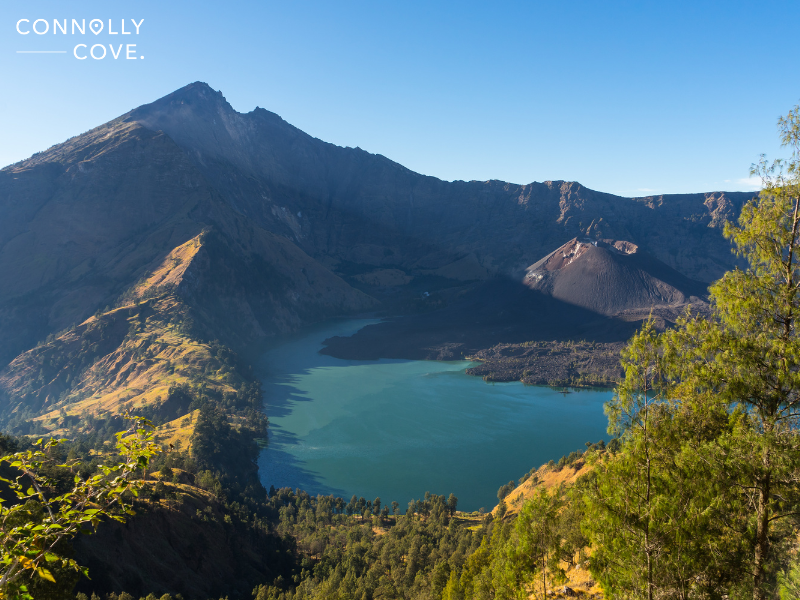
Near the lake, there are hot springs known as the Segara Anak Hot Springs. These natural pools provide a warm and relaxing soak for trekkers after the challenging ascent.
Culture
The culture of Lombok is diverse and influenced by a blend of indigenous traditions, historical encounters, and religious practices. As we mentioned earlier, the majority of the population on the island consists of the Sasak people. They have a distinct culture and language, also called Sasak, and their cultural practices and traditions contribute to the unique identity of Lombok.
The majority of Sasak people practise Islam, and the island has several mosques. The influence of Islam is evident in daily life, traditional ceremonies, and local customs and does play a significant role in the culture.
The Sasak architecture is also quite unique. Villages like Sade and Ende showcase traditional Sasak houses with thatched roofs, woven bamboo walls, and central open spaces.
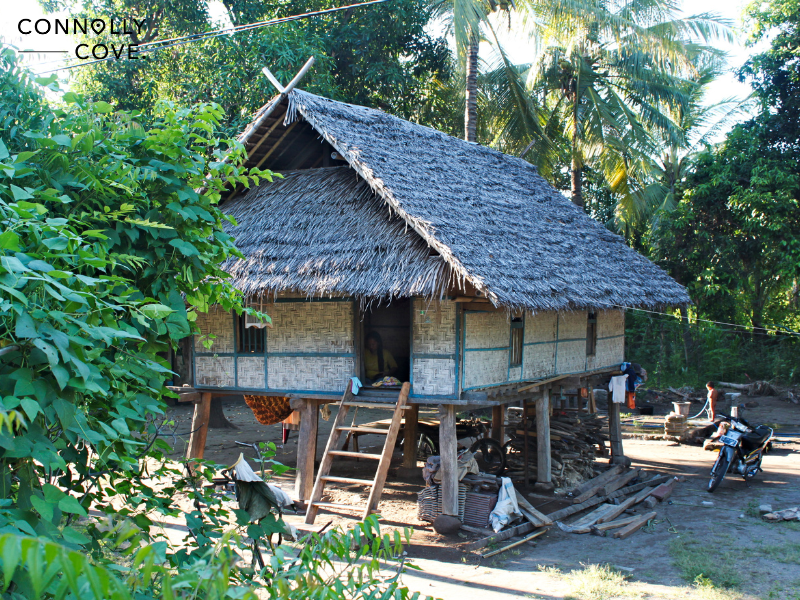
Lombok’s cultural diversity is not limited to the Sasak people. The island is also home to Balinese communities, most of which practise Hinduism, and there are cultural influences from neighbouring islands, all living in harmony alongside the Muslim Sasaks. Pura Lingsar, for example, is a temple that reflects the island’s religious diversity, as it is shared by Hindu and Muslim communities.
Various ceremonies are celebrated in Lombok, including religious rituals, weddings, and many cultural events. The Islamic holidays, for instance, mainly feature the Holy month of Ramadan, Eid al-Fitr, and Eid al-Adha. Weddings are also very significant, for they often involve several stages, including the proposal, engagement, and the actual wedding ceremony, which typically takes place in the bride’s village.
One of the most significant cultural ceremonies is the Senggigi Festival, which is basically intended to promote tourism, featuring dance and music performances, culinary experiences, games and craft exhibitions. Other celebrations include the Peresan Festival, Perang Topat, where people throw rice cakes at one another, symbolising gratitude, and the Bau Nyale Festival, which takes place at the beach and celebrates the annual capture of sea worms.
Sasak music and dance are integral to cultural celebrations, and traditional musical instruments like the Rebab Sasak—a more primitive version of the violin—are used in performances.
Lombok is also known for its traditional arts and crafts, including handwoven textiles, pottery, and wood carvings. The traditional Sasak clothing is, too, so distinct, featuring colourful fabrics. The attire for ceremonies and special occasions often has vibrant patterns and designs.
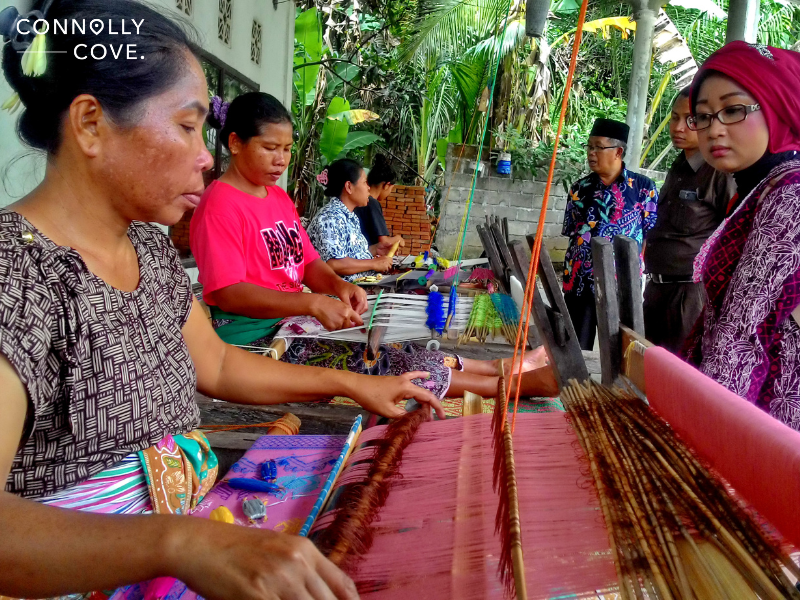
Traveller’s Guide to Lombok
Lombok has experienced a steady increase in local and international tourist arrivals over the years, with the Gili Islands, in particular, being popular among tourists. In addition, the island has been working on diversifying its tourism offerings beyond traditional beach destinations by promoting adventure tourism, cultural experiences, and eco-friendly initiatives.
Ongoing infrastructure developments, such as improvements to Lombok International Airport and the construction of new resorts and hotels, are aimed at accommodating a growing number of tourists.
Best Time to Travel
While the best time to visit Lombok depends on everyone’s preference and the type of activities they plan to engage in, there are several factors that must be considered to ensure a well-spent, high-quality vacation on the island. The most important of these factors is, yes, the weather.
According to the island’s weather forecast, the general tourist season is typically during the dry season, from May to September. During these months, it is usually sunny, and the weather is more predictable, with fewer chances of rainfall. Visitors can enjoy outdoor activities such as trekking, beach outings, and water sports without much concern for rainfall.
However, this means that popular destinations may be more crowded, and accommodation prices may be higher.
Those who are more into quieter experiences and lower prices may prefer to visit the island during the rainy season. Although there is usually higher humidity and occasional heavy rainfall during these months, tourism is still possible anyway.
Some travellers actually prefer the wet season for the lush green landscapes, fewer crowds, and to enjoy certain activities, such as surfing, which is more enjoyable when the waves are more favourable. However, other activities like trekking Mount Rinjani might be affected.
The months of April and October are transitional periods between the dry and rainy seasons, and they may offer a good compromise between favourable weather conditions and fewer crowds.
Getting There
Lombok is accessible by air and sea. Visitors can book direct flights to Lombok International Airport, the primary airport serving the island, from major cities in Indonesia, such as Jakarta, Bali, and Surabaya. Additionally, there are international flights from some neighbouring countries. Both direct and connecting flights are available.
Visitors also can take a ferry from Bali to Lombok. The ferry ride takes approximately three to four hours, depending on the route, with both public and fast boat options available. Fast boat services, in particular, operate between Bali (Padang Bai or Serangan) and the Gili Islands, with some stopping in Lombok. These boats offer a quicker option than public ferries.
That being said, it is always advisable to check for the latest travel information, flight schedules, and any travel restrictions or requirements before visitors plan their trip, as these details can change.
Getting Around
Getting around Lombok can be done through various modes of transportation, depending on visitors’ preferences and the areas they wish to explore. Renting a car is a popular option for those who want the flexibility to explore Lombok independently. Many car rental companies, whether international or local, operate on the island.
However, if they are not into driving themselves, visitors can take taxis instead, which are available in urban areas and at the airport.
Public transportation options include buses and minibuses (known as “bemos”). While they are more budget-friendly and good at getting visitors from here to there, they are not when it comes to exploring remote areas or on a tight schedule.
Another transport option is motorbike rental, which, by the way, is widely available on the island. This option offers a convenient and affordable way to explore the island. Ojeks are motorcycle taxis that can be a quicker way to navigate through traffic, especially in more crowded areas.
A more leisurely way to explore beaches and villages calls for bicycles, which are also available for rent in some areas, especially those with flat terrain. The Gili Islands, which prohibit all kinds of motorised transport, feature cidomos, which are traditional horse-drawn carts, to get around. They might be slower, but they are charming and more suitable for short distances.
If visitors are not into any of that, they may spare themselves the effort of choosing and finding the best mode of transport and join a guided tour. Guided tours are excellent to explore specific attractions or activities with the convenience of transportation provided.
Accommodation
Lombok offers a diverse range of accommodation options to cater to various preferences and budgets. Whether they are luxury resorts, budget-friendly guesthouses, or unique accommodations, every visitor can find something suitable for their stay.
For instance, Lombok boasts several luxury resorts, particularly along its beautiful beaches. These resorts often provide high-end amenities, spa services, private villas, and stunning views of the ocean. Some examples include The Oberoi, Lombok and Katamaran Resort. Boutique hotels, often featuring unique designs and local artwork, offer a more intimate and personalised experience compared to larger chain hotels.
There are also many mid-range hotels in Lombok that offer comfortable accommodations at reasonable prices. These hotels may include standard amenities such as swimming pools, restaurants, and organised tours. For more budget-friendly accommodation, travellers may want to go for guesthouses and homestays. These usually provide a more local and authentic experience, with the chance to interact with local hosts.
Other options include backpacker hostels that provide shared dormitory-style accommodations and communal spaces at much lower prices, and eco-friendly resorts that focus on environmental conservation and sustainability, responsible practices, and community engagement.
When choosing accommodation in Lombok, visitors must consider factors such as location, amenities, and their preferred type of experience. It is also advisable to book well in advance, especially during peak tourist seasons, to guarantee the best rates and availability. Online travel platforms and reviews can be valuable resources for researching and booking accommodations.
Attractions
Lombok is known for its diverse range of attractions and activities, offering everything from sun-kissed beaches to cultural experiences and adventure activities. Besides Mount Rinjani, Gili Islands, and Sendang Gile and Tiu Kelep Waterfalls, which we have discussed earlier, here are some of the other terrific attractions to visit while on Lombok:
- Kuta and Tanjung Aan Beaches: These stunning beaches are famous for their white sands and are popular spots for surfers. The area around Kuta has several other beautiful beaches, each with its own character.
- Pura Meru: Located in Mataram, Pura Meru is the largest temple in Lombok and an important Hindu temple with three towering levels representing the three main deities in Hinduism.
- Pusuk Monkey Forest: This forest offers an enchanting drive through lush hills that offer breathtaking views of the surrounding landscapes. The forest is also home to a thriving population of long-tailed macaque monkeys, providing visitors with an opportunity to observe these fascinating creatures in their natural habitat.
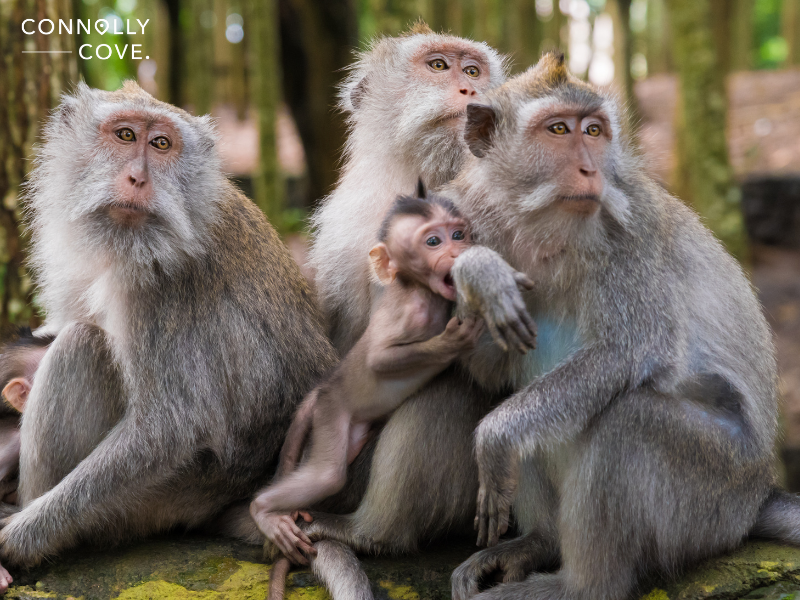
- Sasak Villages: Visitors can immerse themself in the local culture by exploring traditional Sasak villages and experiencing traditional customs, architecture, and daily life.
Lombok stands as an island gem, a captivating destination that effortlessly balances its natural wonders with rich cultural experiences. From the majestic peaks of Mount Rinjani to the pristine beaches of Kuta and the enchanting allure of the Gili Islands, Lombok invites travellers who seek a genuine and memorable escape in a world of diverse landscapes and warm hospitality.



